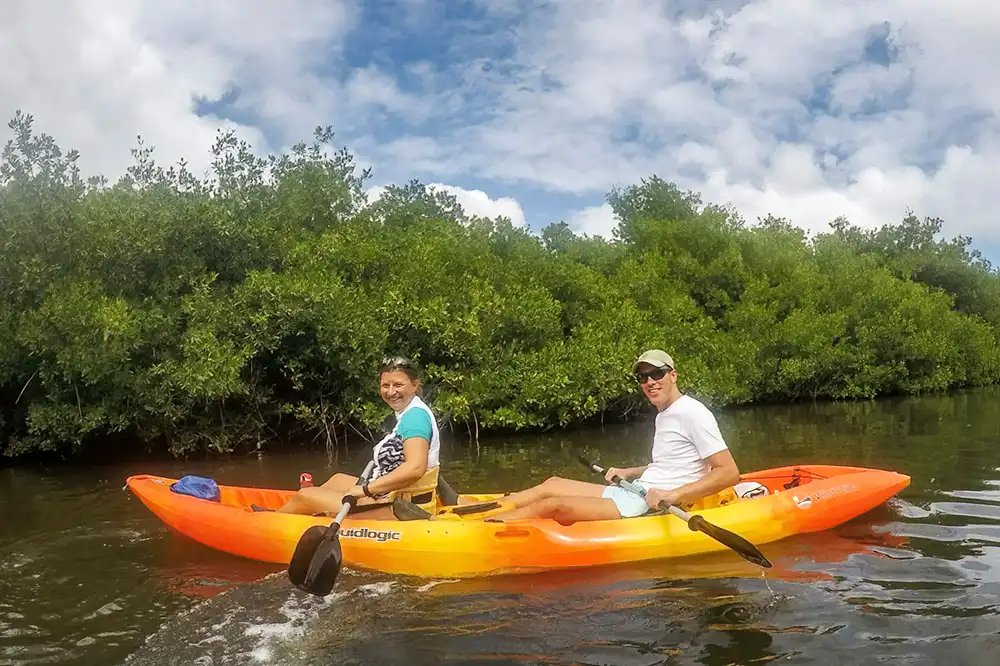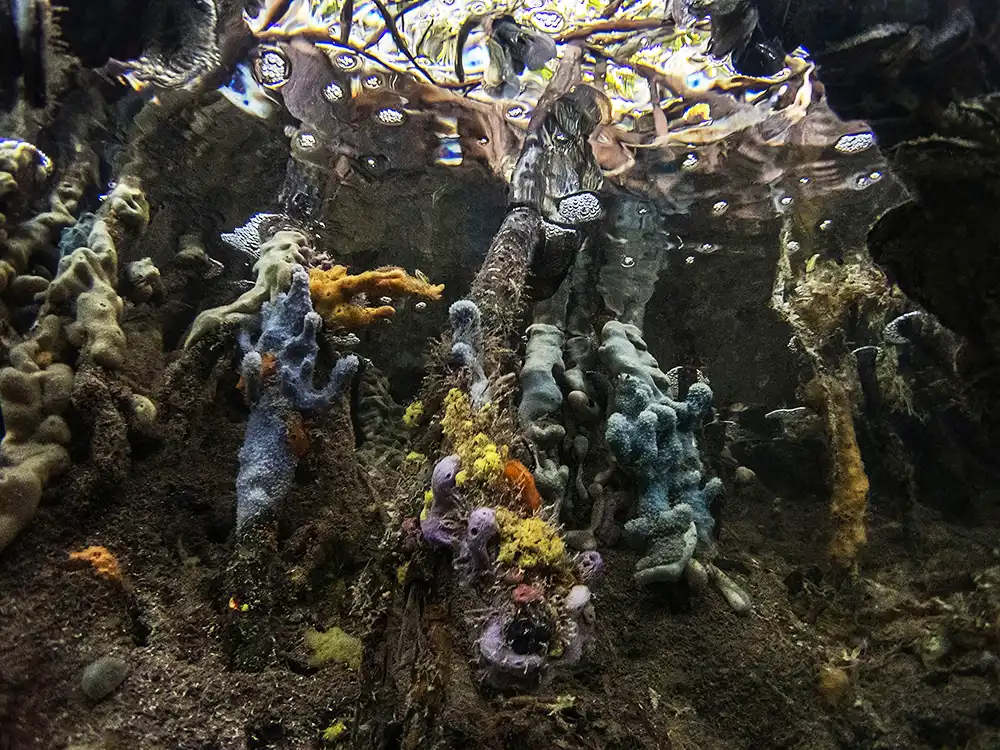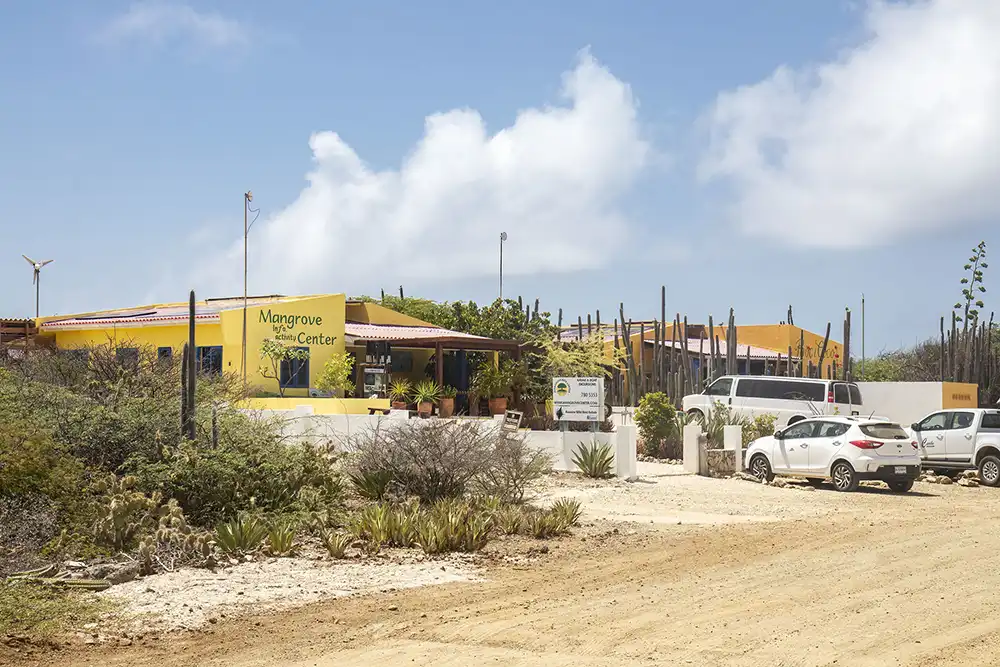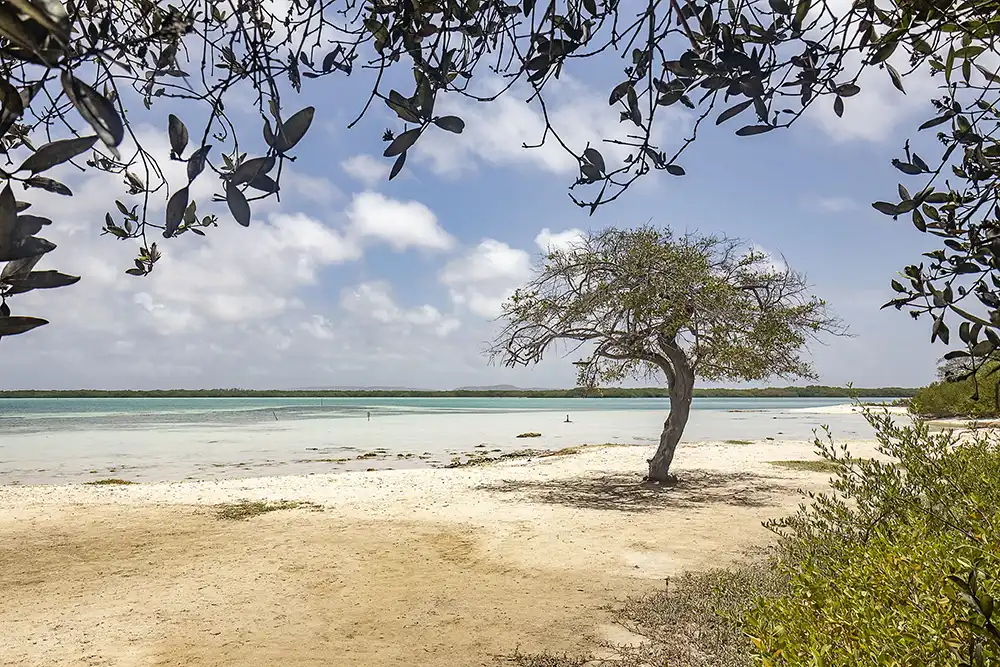In the southeast of Bonaire, you’ll find the stunning mangrove forests. This area is so delicate that you can only visit it under the guidance of a knowledgeable guide. This kayaking tour is an experience you absolutely can’t afford to miss!
We are HopiBonaire, and with our pick-up truck, we conduct tours all over the island, including off-road areas. The red mangrove forest is the only place on Bonaire where we cannot take you. Therefore, we recommend the Mangrove Info Center. For inquiries or bookings, please contact them here.
Onderwerpen
Want to embark on more fantastic explorations? On our tours, we cover the rest of the island!
Kayaking Tour in the Mangroves
From the road, Bonaire’s mangrove is already a sight to behold. The forest edge, composed of so-called black and white mangrove trees, remains lush green throughout the year and teems with life. You’ll also find numerous pools hosting flamingos, herons, and other wading birds. Behind this forest edge lies a magical world: the red mangrove forest. To explore this extraordinary forest, book a kayaking tour in the mangrove at the Mangrove Center.

As you kayak through the old fisherman’s tunnels, the “forest trails” of the mangrove forest, these tunnels connect the patches of open water. Along the way, the guide shares fascinating information about this unique area and the animals that inhabit it. You also paddle across a stretch of Lac Bay, where you learn about the seagrass and the queen conch (known as karkó in Papiamentu) responsible for maintaining the grass in good condition. The seagrass serves as a food source for the sea turtles.

Snorkeling During the Mangrove Tour
One of the fisherman’s tunnels is open for snorkeling. The underwater world in the mangrove is incredibly beautiful.

You wouldn’t expect it, but the underwater world of the mangrove is much more colorful than that of the reef! This is due to the sponges in various colors that attach themselves to the roots. You’ll also see hundreds of predatory fish waiting in the tunnel for a tasty meal to emerge between the roots. While snorkeling, you’ll see them passing by just a few meters away! Enjoy observing the upside-down jellyfish as well, a jellyfish that lives upside down.

Helpful Tips
The best advice we can give you is to book your mangrove tour in advance, preferably before your arrival in Bonaire. During the peak season, this popular tour tends to fill up quickly.
|
Keep the following in mind:
- During the tour, you’ll be out on open water regularly, so protect yourself from the sun with sunscreen, sunglasses, a UV shirt, and/or a hat.
- Bring approximately one liter of drinking water for the kayak. If you bring a plastic bottle, make sure to remove the label.
- Pack your snorkeling gear as you’ll be snorkeling during the tour. However, you don’t need to bring fins as they’re not allowed during the tour.
- A small towel is useful to place on your neck if you get warm from paddling.
- Ensure you can capture photos and videos during the tour. If you don’t have an underwater camera or GoPro, you can bring your phone. The Mangrove Center offers a dry-bag that you can borrow to keep it safe.

You find the Mangrove Center halfway along Kaminda Lac, the unpaved road to Lac Cai. Depart well in advance, as this road is often in poor condition, especially during and shortly after the rainy season. Locals jokingly call it Cellulitis Road. Along the way, you can also enjoy beautiful sightings of flamingos.
About Us: A tour With HopiBonaire
During a tour with HopiBonaire, you’ll embark on a journey of discovery to the most remote and stunning places on the island. We love introducing our guests to the diversity of Bonaire. That’s why our tours also include visits to the mangrove surroundings, allowing you to enjoy the birds and the magnificent underwater world of Lac.
The Sorobon mangrove forest is a part of our Mesmerizing Bonaire island tour. For the true off-road enthusiasts, we offer a visit to the pristine Lac Cai.

During your tour, you’ll be exclusively with your own group, which ensures an intimate and personalized experience at your own pace. We don’t rush; we value quality time! All tours can be customized according to your preferences, and there’s also the option to book a fully tailored tour. Want to know more?
Read More
This blog is part of a series dedicated to exploring the region around Lac Bay. Here are the other blogs within this series: Lac Bay/Sorobon: At Sorobon, you can savor beverages, engage in surfing, birdwatching, and snorkeling along the reef. In this post, we delve into the world of the queen conch, a fascinating encounter while snorkeling. Lac Cai: At the end of the road where the Mangrove Center is located, you will find Lac Cai. This picturesque peninsula offers tranquility, a sandy beach, and a diverse underwater ecosystem. Snorkeling here provides a distinctive experience compared to the reef. The Mangrove of Bonaire: In this piece, we explore the resilience of mangrove trees thriving in saline environments. Additionally, we emphasize the significance of these forests and their vital role in environmental conservation. Do you enjoy a bit of exercise? Then go Hiking on Bonaire! We have written a multitude of blogs encompassing diverse subjects, among them about Bonaire’s nature. You’ll find all of our blogs conveniently organized on our dedicated blog page. |

